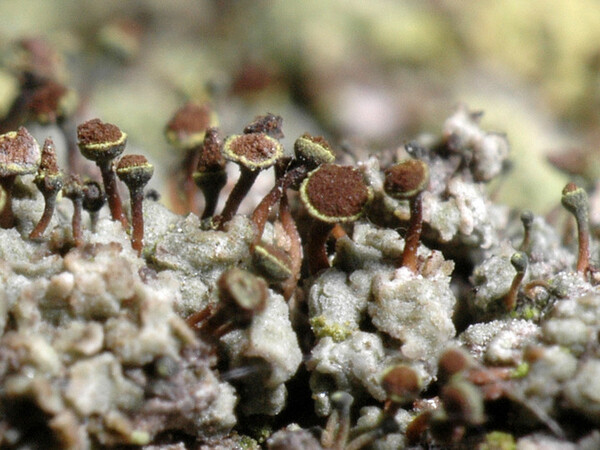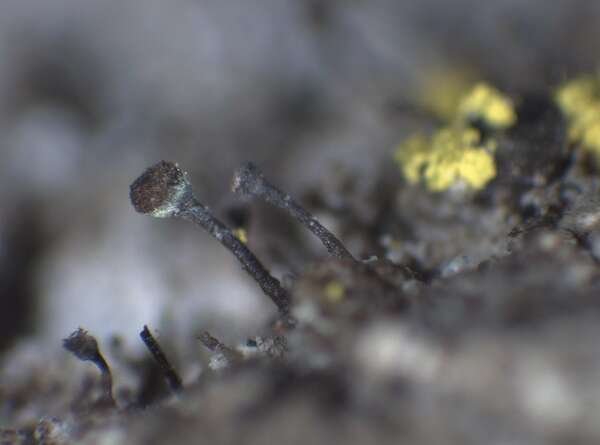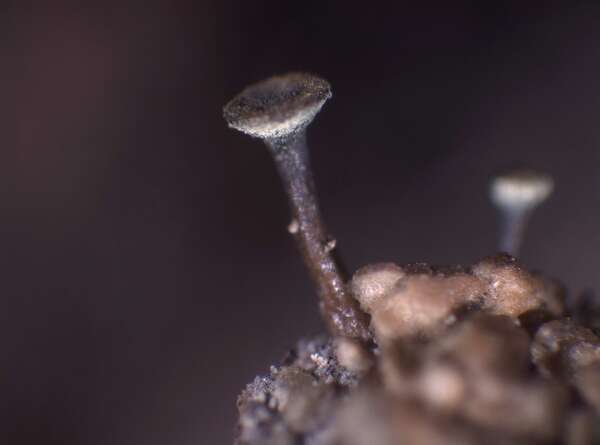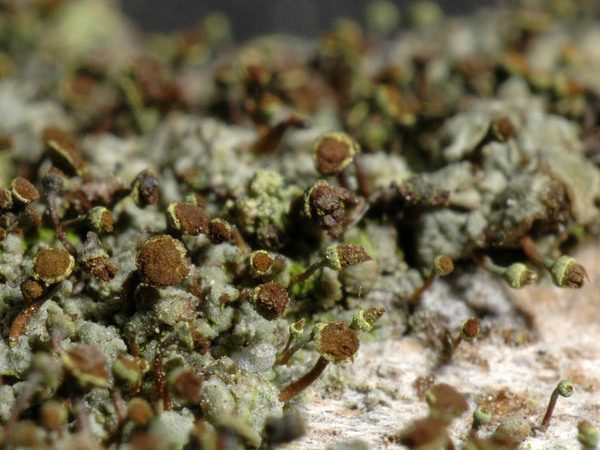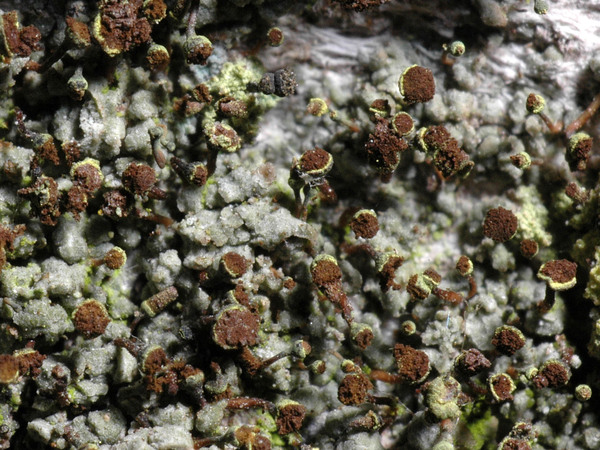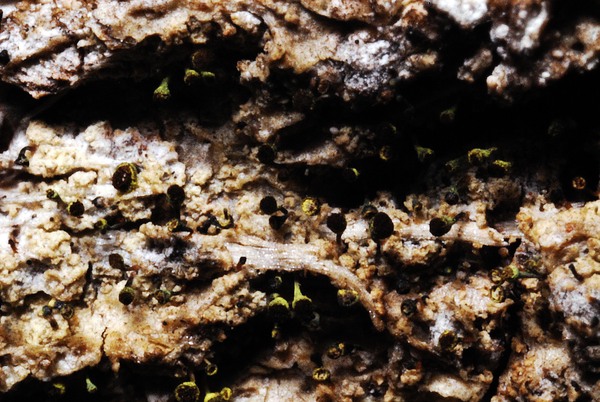Chaenotheca phaeocephala (Turner) Th. Fr.
N. Acta Reg. Soc. Sci. Upsal., ser. 3, 3: 251, 1860. Basionym: Lichen phaeocephalus Turner - Trans. Linn. Soc. London, 8: 281, 1807.
Synonyms: Calicium phaeocephalum (Turner) Fr.; Calicium saepiculare Ach.; Chaenotheca chlorella auct. p.p.; Chaenotheca phaeocephala var. subhispidula Nádv.; Cyphelium phaeocephalum (Turner) Körb.
Distribution: N - Ven (Puntillo & Puntillo 2009), TAA (Nascimbene 2006c, 2013, 2014, Puntillo & Puntillo 2009, Nascimbene & al. 2007b, 2014, 2022, Nascimbene & Marini 2015, Trindade & al. 2021), Emil (Nascimbene & al. 2021). C - Tosc (Puntillo & Puntillo 2009), Marc (Puntillo & Puntillo 2009), Umb (Ravera 1998, Ravera & al. 2006, Puntillo & Puntillo 2009), Laz (Puntillo & Puntillo 2009, Zucconi & al. 2013), Abr (Caporale & Pagliani 2010, Caporale & al. 2016), Mol (Nimis & Tretiach 1999, Caporale & al. 2008, Puntillo & Puntillo 2009), Sar (Zedda & Sipman 2001). S - Camp (Aprile & al. 2003b, Puntillo & Puntillo 2009), Bas (Puntillo & Puntillo 2009, Puntillo & al. 2009, Puntillo & al. 2012), Cal (Puntillo 1994, 1996), Si (CLU 18071).
Description: Thallus crustose, episubstratic and usually well-evident, granulose-verrucose to minutely squamulose, dark grey, olivaceous brown or greenish brown. Apothecia stalked, pin-like, 0.5-1.2 mm high. Stalk stout, pale to dark brown, epruinose or sometimes yellowish-pruinose in upper part, of periclinally arranged, medium brown hyphae; outer part of stalk hyaline, of strongly gelatinized hyphae. Capitulum 0.1-0.3 mm across, deep purple brown, yellowish pruinose in lower part and/or along the margin, broadly obconical to lenticular, with a well-developed excipulum of periclinally arranged hyphae. Mazaedium well-developed, brown; hypothecium medium brown, broadly obconical, with a flat to slightly convex upper surface. Asci cylindrical to narrowly clavate, formed singly from branched ascogenous hyphae, dissolving early, with 1-2-seriate ascospores. Ascospores 1-celled, brown, globose, 6-7 µm wide, the wall with irregular cracks delimiting polygonal areas. Photobiont chlorococcoid, with globose cells. Spot tests: thallus K-, C-, KC-, P-. Chemistry: thallus without lichen substances; yellow pruina with vulpinic acid.Note: a cool-temperate, holarctic lichen found on old oaks in open woodlands, in bark fissures seldom wetted by rain, with several records in Central-Southern Italy, certainly more widespread in the Alps.
Growth form: Crustose
Substrata: bark and lignum
Photobiont: green algae other than Trentepohlia
Reproductive strategy: mainly sexual
In underhangs rarely wetted by rain
Commonnes-rarity: (info)
Alpine belt: absent
Subalpine belt: absent
Oromediterranean belt: absent
Montane belt: very rare
Submediterranean belt: rare
Padanian area: absent
Humid submediterranean belt: rare
Humid mediterranean belt: absent
Dry mediterranean belt: absent
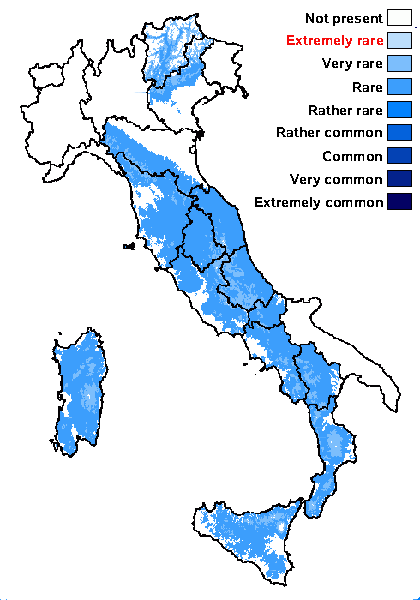
Predictive model
Herbarium samples
Growth form: Crustose
Substrata: bark and lignum
Photobiont: green algae other than Trentepohlia
Reproductive strategy: mainly sexual
In underhangs rarely wetted by rain
Commonnes-rarity: (info)
Alpine belt: absent
Subalpine belt: absent
Oromediterranean belt: absent
Montane belt: very rare
Submediterranean belt: rare
Padanian area: absent
Humid submediterranean belt: rare
Humid mediterranean belt: absent
Dry mediterranean belt: absent

Predictive model
| Herbarium samples |
 Index Fungorum
Index Fungorum
 GBIF
GBIF
